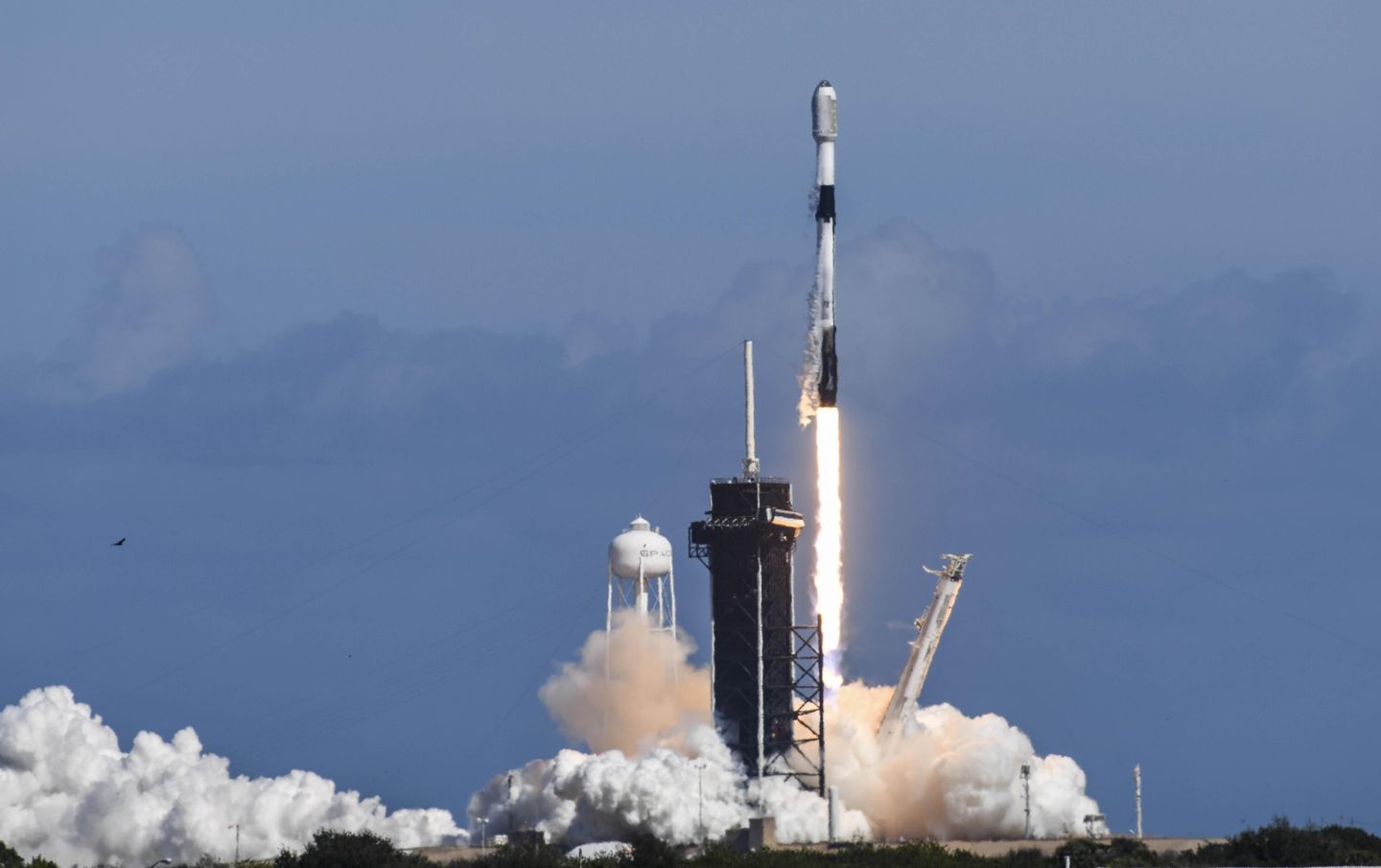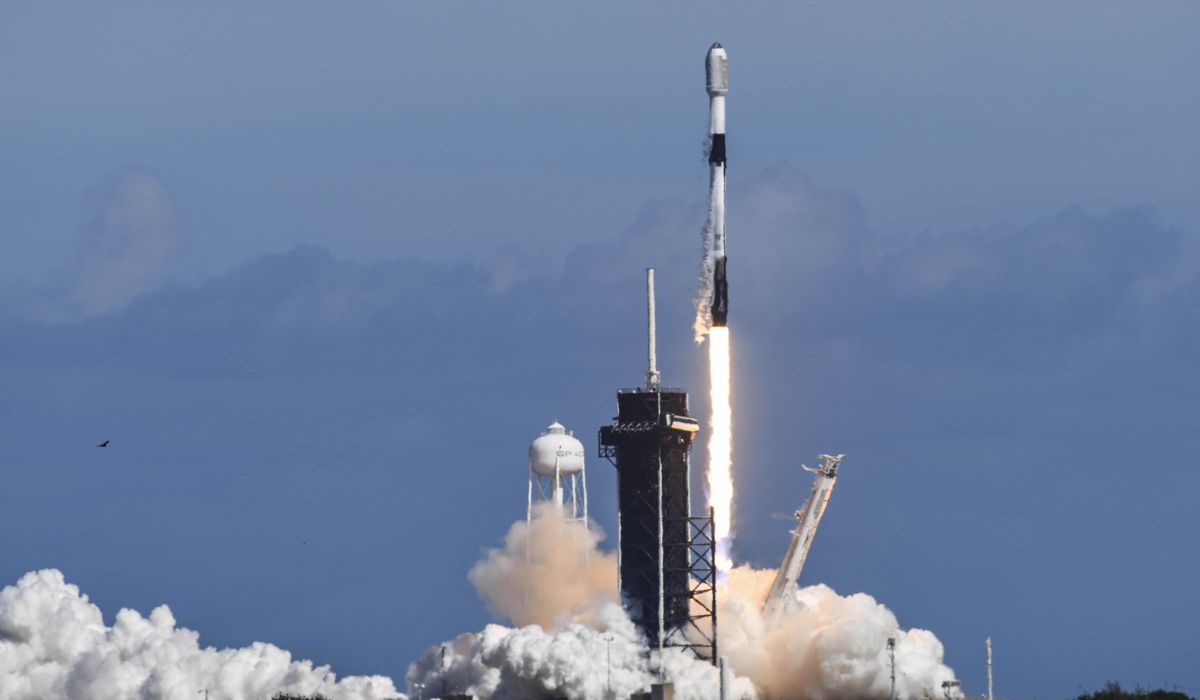

Up to 40 satellites recently launched as part of a new Starlink internet communications system were damaged by a solar geomagnetic storm and are expected to fall to earth and burn up in the atmosphere, SpaceX, the systems’ manufacturer, announced Tuesday.
The loss of the satellites highlights the vulnerability of American civilian and military space systems to the damaging effects of a possible electromagnetic pulse (EMP) attack from an adversary, according to security analysts.
Starlink is a global network of low-Earth orbit satellites that provide high-speed broadband internet service, according to SpaceX, the commercial space company headed by Elon Musk.
“The loss of 40 Starlink satellites to a recent geomagnetic storm should be yet another wake-up call to Washington about the existential threat to our civilization from a solar superstorm,” said Peter Pry, a former CIA official and advocate for defenses against EMP and solar storms.
Mr. Pry, who participated in a congressional EMP commission several years ago, said the recent geomagnetic storm was not a superstorm like the one that took place in 1859 prior to the electronic age, following a sunburst called the “Carrington Event.”
“The EMP Commission warned that such a storm could potentially damage many civilian and military satellites that are crucial to the nation’s economy and national security, as well as cause natural EMP/geomagnetic disturbance effects that could crash electric grids, resulting in a protracted nationwide blackout,” Mr. Pry said.
The recent EMP Commission urged the U.S. government and private industry to harden satellites, electric grids and other life-sustaining critical infrastructures to avert a national catastrophe.
China in July conducted a test of a polar-orbiting hypersonic glide vehicle that U.S. officials say could be used as a special nuclear strike weapon from space. Alternatively, the vehicle could set off an electronics-scrambling nuclear detonation in pace that would block satellite communications and navigation.
Michael J. Listner, head of Space Law and Policy Solutions, a think tank, said China setting off a nuclear weapon in space is a credible threat, and Starlink’s satellite losses highlight the problem.
“This event highlights how vulnerable low-Earth orbit satellites are to EMP, including a low-yield tactical nuclear weapon detonated in the [low Earth orbit] region,” Mr. Listner said.
An electromagnetic pulse is produced by gamma rays from a nuclear blast or from special electronic weapons and can disrupt or destroy all electronic devices over wide areas. The U.S. military is highly reliant on space systems for intelligence, surveillance and reconnaissance, as well as for guiding precision-guided weapons to targets.
SpaceX said a total of 49 Starlink satellites were launched on Feb. 3 on a Falcon 9 booster from the Kennedy Space Center in Florida. The satellites deployed in low Earth orbit around 130 miles in space and achieved controlled flight, the company statement said.
The initial low orbit was intended to make sure any failed deployments would fall short of orbiting and be burned up in the atmosphere.
“Unfortunately, the satellites deployed on Thursday were significantly impacted by a geomagnetic storm on Friday,” the company said. “These storms cause the atmosphere to warm and atmospheric density at our low deployment altitudes to increase.”
The electronic storm increased the atmospheric drag on the satellites that were maneuvered to orbit what the company called “edge-on (like a sheet of paper) to minimize drag.” The move was designed to protect the satellites from the storm’s space debris.
The satellite maneuvers were coordinated with the Space Force’s 18th Space Control Squadron and LeoLabs, a space company that maps objects in low-Earth orbit.
“Preliminary analyses show the increased drag at the low altitudes prevented the satellites from leaving safe-mode to begin orbit raising maneuvers, and up to 40 of the satellites will re-enter or have already re-entered the Earth’s atmosphere,” SpaceX said.
The satellites do not pose a risk of collision with other satellites and are designed to burn up on reentry without creating orbital debris.
A recent Russian anti-satellite test in November caused thousands of debris pieces that could threaten satellites and the orbiting Space Station. China in 2007 also blew up a weather satellite with a missile, causing tens of thousands of orbiting debris pieces.
